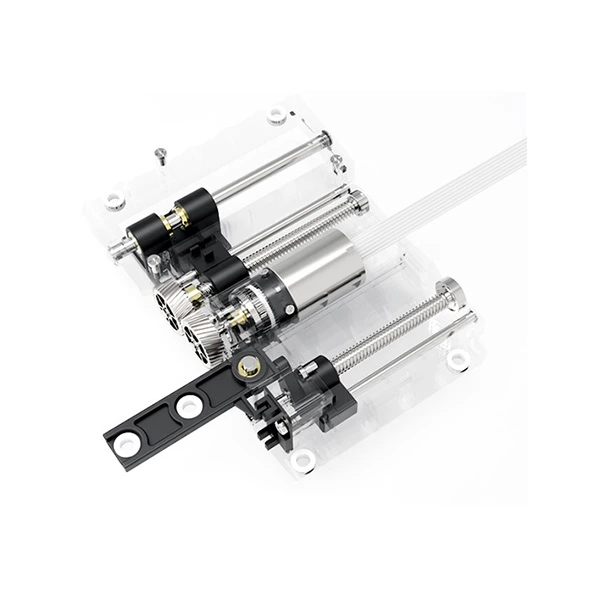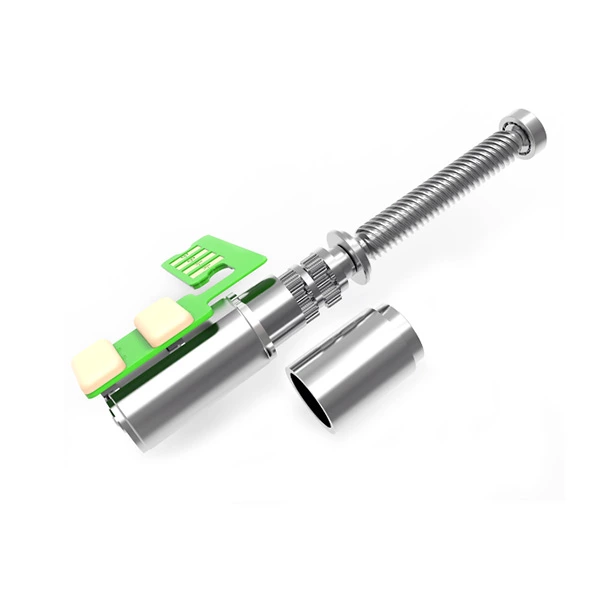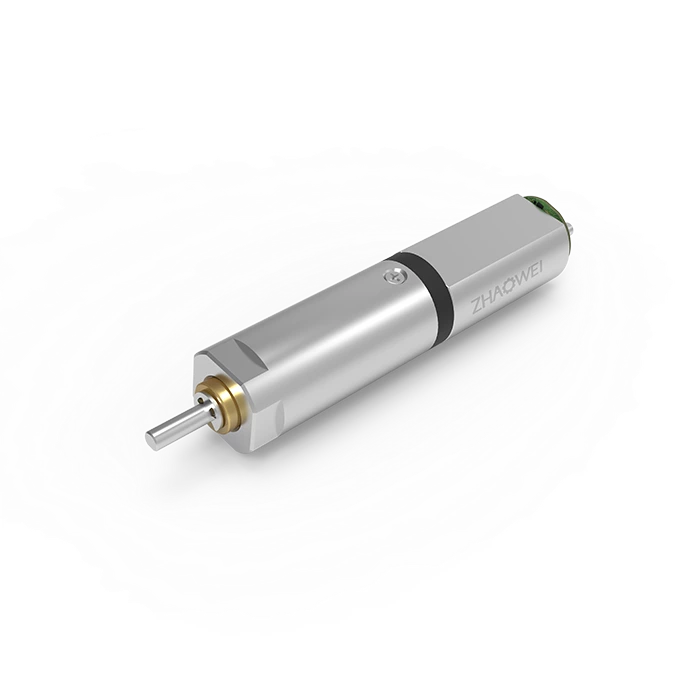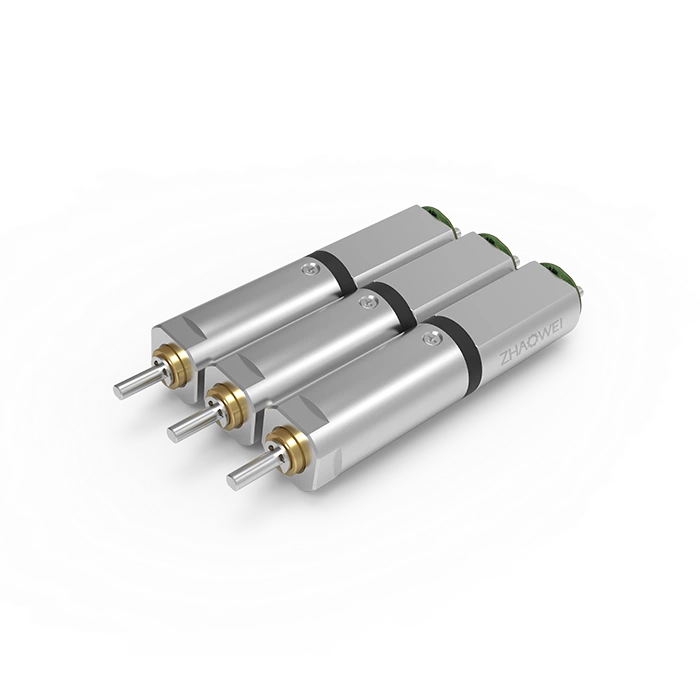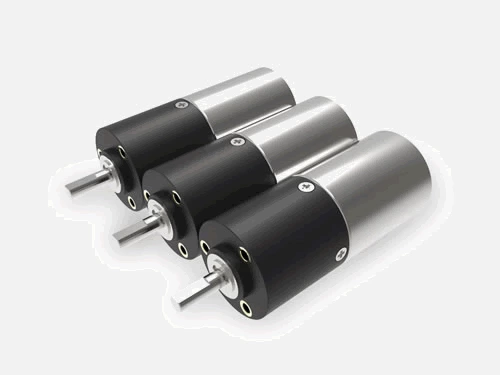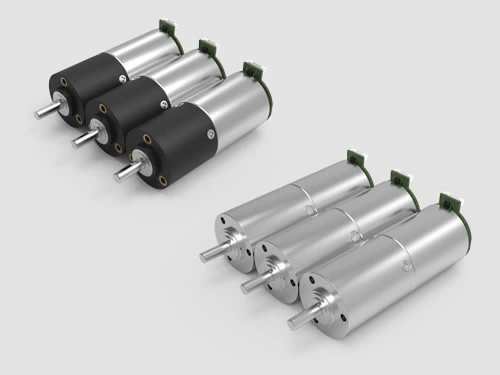How Do Planetary Gear Motors Work?
With the variety of gear motors available on the market, novices in the gear motor industry might have a hard time understanding the functions each type of gear motor serves. This potentially leads to a long-term process of learning and stimulating knowledge. This article demonstrates most of the main points of planetary gear motors - the most common type of gear motor. In other words, a planetary gear motor refers to a motor with a planetary gearbox/planetary gearhead. When combined with a DC motor, it is known as a DC planetary gear motor, of which, 12V and 24V DC planetary gear motors are the most common. Therefore, we must learn the structure of the planetary gearbox.
Planetary gearheads normally consist of three parts: a sun gear, planet gears (or “satellite gears”), and a ring gear. The sun gear is usually placed in the center, and the planet gears orbit around the sun gear, receiving torque from it. The outer ring gear (refers to the lower housing) meshes with the planet gears. This is an image of a micro planetary gear motor. Planetary gear motor
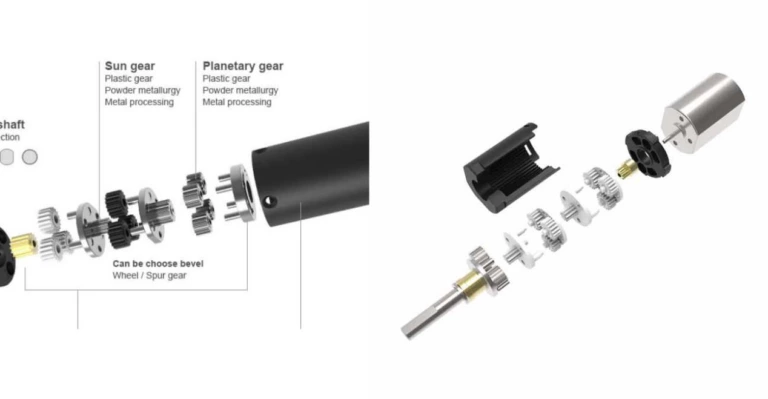
How Do Planetary Gear Motors Work?
When the sun gear rotates under the drive of the motor, the planet gears mesh with the sun gear and starts to rotate. The planet gears simultaneously meshes with the ring gear on the inner wall of the planetary gearhead housing. Under the rotational driving force, the planetary gear eventually rotates in the same direction as the sun gear, forming a "revolution" movement around the sun gear. Each planetary gearbox generally has multiple planetary gears (also known as “multi-stages”). With the combined action of the rotational driving force of the input shaft and the sun gear, they rotate around the central sun gear and transmit the output torque of the planetary gearbox.
It is easy to see that the input speed of the planetary gearbox motor (namely, the speed of the sun gear) is higher than the output speed, which is why it is usually called a planetary gear reduction motor. The speed ratio between the motor and the output speed is called the reduction ratio of the planetary reducer, or "gear ratio" for short, usually indicated by the letter "i" in the product specifications. The gear ratio is determined by the number of teeth on the ring gear and sun gear. In general, the gear ratio of the planetary reducer with a single-stage reduction gear is usually between 3 and 10. A planetary gear motor with a gear ratio of more than 10 requires a two-stage (or more) planetary gearhead.
The Advantages of the Planetary Gear Motors
- High torque: With more teeth in contact, the mechanism can transmit and withstand greater torque in a more uniform manner.
- Durable and efficient: The bearing can reduce friction by connecting the shaft directly to the gearbox. It allows for better rolling and smooth running, simultaneously enhancing efficiency.
- Easy to install: Its mechanism, contained in a cylindrical gearbox, can be installed in almost any space.
- Impressive precision: The rotation angle is fixed, which improves the accuracy and stability of the rotation movement.
- Compact size: The planetary gear motor can be compact and small due to the planetary structure, in which multiple gears mesh together and orbit around a sun gear. This achieves a 3.4mm, 4mm, or 6mm planetary gear motor.
- Low-noise: The multiple gears enable more surface contact. Rolling is much softer, and jumps are virtually nonexistent.
Planetary gear motors are usually used when you need to drastically reduce speed and increase torque in a limited space. You may refer to these cases for specific applications. In actual use, however, the parameters including diameter, voltage, input speed, and torque need to be customized. If you require gear motor customization, ZHAOWEI, a leading expert in developing a variety of planetary drive systems, is here to help.







